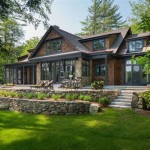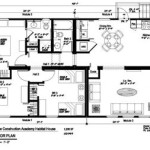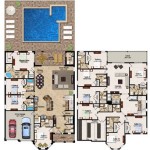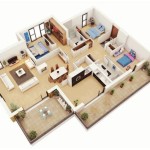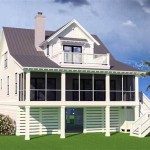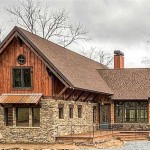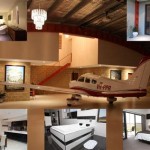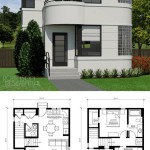Bluebird Bird House Plans: A Comprehensive Guide To Planning
Attracting bluebirds to your garden or property can be a rewarding endeavor. These vibrant birds are not only beautiful to observe but also beneficial to the environment, helping to control insect populations. Success in attracting bluebirds, however, hinges on providing suitable nesting sites. Constructing a birdhouse specifically designed for bluebirds, based on well-researched bluebird bird house plans, is crucial. This article provides a comprehensive guide to planning and understanding the key elements of successful bluebird house construction.
Bluebirds are cavity nesters, meaning they prefer to nest in enclosed spaces, typically holes in trees. However, natural cavities are often scarce, making appropriately designed birdhouses essential for their survival and propagation, particularly in areas where natural habitats have been reduced. Understanding the specific needs of bluebirds is paramount to creating a birdhouse they will readily adopt.
A poorly constructed or inappropriately sized birdhouse can be detrimental. It may attract unwanted species, expose the birds to predators, or simply be unsuitable for nesting. Thorough planning, utilizing reliable bluebird bird house plans, is therefore an investment in successful bluebird conservation.
Understanding Bluebird Preferences
Before embarking on birdhouse construction, it's essential to deeply understand the specific requirements of bluebirds. This knowledge will directly inform the selection and modification of bluebird bird house plans. Key factors include the entrance hole size, the interior dimensions, ventilation, drainage, and the overall location of the birdhouse. Each element plays a vital role in the safety and comfort of the nesting birds.
The size of the entrance hole is arguably the most critical factor. A hole that is too large will allow larger, more aggressive birds, such as starlings and house sparrows, to usurp the nesting site, preventing bluebirds from nesting. A hole that is too small will simply exclude bluebirds. The ideal entrance hole size for bluebirds is 1 ½ inches in diameter. This size effectively deters most unwanted species while still allowing bluebirds easy access.
The interior dimensions of the birdhouse are also important. A floor size of approximately 5 inches by 5 inches provides adequate space for the bluebird family. The height from the floor to the underside of the roof should be between 8 and 10 inches. This provides sufficient room for the adults to tend to the nest and for the fledglings to develop.
Ventilation and drainage are critical for maintaining a healthy environment inside the birdhouse. Proper ventilation helps to prevent overheating during hot weather and reduces the build-up of moisture. Drainage holes in the floor of the birdhouse are essential for allowing rainwater to escape, preventing the nest from becoming waterlogged. Two or three ¼-inch drainage holes are typically sufficient.
The location of the birdhouse also significantly impacts its attractiveness to bluebirds. Bluebirds prefer open areas with scattered trees or shrubs, providing perching spots for hunting insects. The birdhouse should be mounted on a pole or post, away from branches or other structures that could provide access for predators such as cats and raccoons. Ideally, the birdhouse should face away from prevailing winds and receive some afternoon shade.
Choosing the Right Bluebird Bird House Plans
With a firm understanding of bluebird preferences, the next step is to select appropriate bluebird bird house plans. Numerous plans are available online and in books, each with its own advantages and disadvantages. It is crucial to thoroughly review and compare plans, selecting one that best suits the specific needs of the local bluebird population and the available resources.
Look for plans that are specifically designed for bluebirds. Avoid plans that are generic or intended for a variety of bird species, as these may not adequately meet the specific requirements of bluebirds. The plans should clearly specify the dimensions, materials, and construction techniques. Clear and accurate drawings are essential for successful construction.
Consider the materials required for construction. Untreated wood is the best choice, as treated wood can contain chemicals that are harmful to birds. Cedar, redwood, and pine are all suitable options. Avoid using plywood or particleboard, as these materials tend to warp and deteriorate in the weather. The plans should specify the type and amount of wood needed, as well as any other necessary materials, such as nails, screws, and hinges.
Evaluate the complexity of the plans. Some plans are relatively simple and easy to construct, while others are more complex and require more advanced carpentry skills. Choose plans that are within the builder's skill level. If necessary, consider simplifying the plans or seeking assistance from a more experienced builder.
Always check for features designed to deter predators. Some bluebird bird house plans include features such as predator guards, extended roofs, or recessed entrances. These features can help to protect the nesting birds from predators such as snakes, raccoons, and cats. Predator guards are particularly important in areas where these predators are common.
Key Construction Considerations
Once the appropriate bluebird bird house plans have been selected, the construction process can begin. Careful attention to detail throughout the construction process is essential for creating a safe and functional birdhouse. Accuracy in cutting and assembling the pieces is crucial for ensuring that the birdhouse meets the specified dimensions and is structurally sound.
Start by cutting the pieces of wood according to the dimensions specified in the plans. Use accurate measuring tools and sharp cutting tools to ensure precise cuts. Sand the edges of the pieces to remove any splinters or rough edges. This will help to prevent injuries to the birds.
Assemble the pieces according to the instructions in the plans. Use nails or screws to securely fasten the pieces together. Avoid using glue, as it can contain chemicals that are harmful to birds. Ensure that all joints are tight and secure. A loose joint can weaken the structure of the birdhouse and allow water to enter.
Drill the entrance hole to the specified diameter (1 ½ inches). Position the entrance hole high enough above the floor of the birdhouse to prevent fledglings from falling out prematurely. A distance of 6 to 7 inches from the floor to the bottom of the entrance hole is generally adequate. Consider adding a predator guard around the entrance hole to deter predators from reaching into the birdhouse.
Drill ventilation holes in the upper portion of the sides of the birdhouse. These holes should be small enough to prevent insects from entering but large enough to allow for adequate air circulation. Drill drainage holes in the floor of the birdhouse. These holes should be large enough to allow rainwater to drain out but small enough to prevent nesting material from falling through.
Ensure that the roof of the birdhouse is properly sloped to allow rainwater to run off. An overhanging roof can also help to protect the entrance hole from rain and snow. Consider adding hinges to the roof or one of the sides of the birdhouse to allow for easy cleaning and maintenance. Regular cleaning is essential for preventing the build-up of parasites and diseases.
Avoid adding perches to the exterior of the birdhouse. Perches can actually be detrimental, as they provide a foothold for predators. Bluebirds do not need perches to enter or exit the birdhouse. They can easily cling to the wood around the entrance hole.
Once the birdhouse is assembled, paint or stain the exterior with a light-colored, non-toxic stain or paint. Dark colors can absorb too much heat, making the birdhouse uncomfortable for the birds. Light colors reflect sunlight and help to keep the birdhouse cool. Allow the paint or stain to dry completely before mounting the birdhouse. Ensure the paint or stain is fully cured and free of any lingering odors.
By carefully planning and constructing a bluebird birdhouse according to well-researched plans and best practices, individuals can contribute to the conservation of these beautiful and beneficial birds. The effort will be rewarded with the opportunity to observe bluebirds raising their families in a safe and comfortable environment.

Diy Bluebird Approved Birdhouse Tutorial Fanningsparks

Free Bluebird House Plans Multiple Designs

How To Make A Diy Bluebird House Birds And Blooms

Birdhouse And Nest Box Plans For Several Bird Species The Birders Report

Birdhouse And Nest Box Plans For Several Bird Species The Birders Report

Peterson Bluebird Nest Box Plan Proven Design Guide Sketchup Model

Ultimate Guide Checklist Get Bluebirds To Use Your Nest Box

Diy Birdhouse Using Leftover Siding Diamond Kote System

Can Someone Help Me On The Right Dimensions For An Eastern Bluebird House

Bluebird Birdhouse Plans Instructions Super Easy Diy Nature Project Bird Houses Are Great Gifts You Can Make This Box
Related Posts

